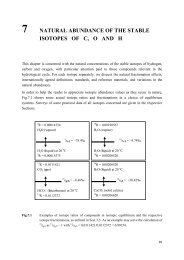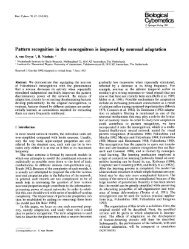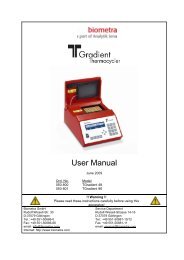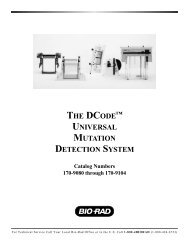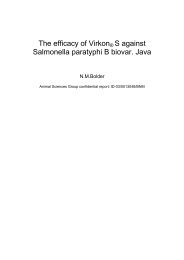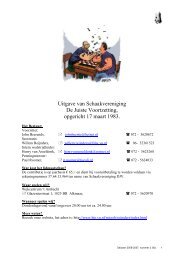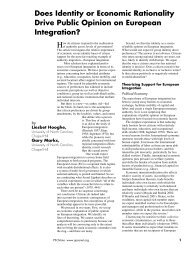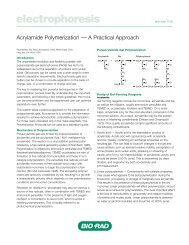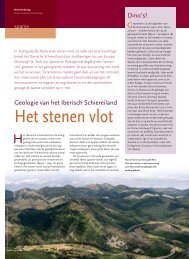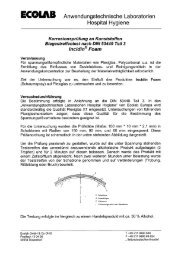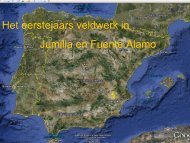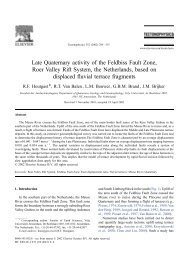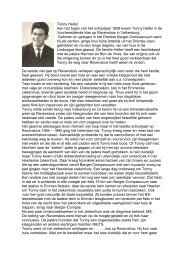DON'T PANIC - falw.vu
DON'T PANIC - falw.vu
DON'T PANIC - falw.vu
Create successful ePaper yourself
Turn your PDF publications into a flip-book with our unique Google optimized e-Paper software.
A GUIDE TO DGGE (V2) Page 16<br />
The best word is patience. Do everything slowly and make sure there is plenty of liquid around<br />
to lubricate the transfer of the gel. You can reduce your anxiety by removing one step - when<br />
you transfer the gel to staining, keep the gel on the bottom plate and simply put the whole plate<br />
in the staining bath. I shake the gel off the bottom plate while it is in the staining bath to make<br />
sure that the dye can diffuse in from all directions. When lifting the gel out of the staining bath<br />
(and then into a de-staining bath and/or directly onto the UV table) lift the plate out of the<br />
staining buffer partially - this allows you to see where the gel is. If the gel is centered on the<br />
plate, place one palm on top of the gel to keep it in place while you lift the whole plate out (with<br />
the gel) using the other hand. Let some of the liquid drain off the plate (keep your palm on the<br />
gel). Now place the plate on your UV table at an angle and let the gel slide onto the table (gently,<br />
slowly, patience....); as the gel comes off slide the plate further away. Have a water bottle<br />
available and add water when needed. Also, you may have to nudge the gel if it gets stuck -<br />
particularly at the edges where there is grease (from the spacers). Don't worry about having the<br />
gel be perfect as it slides off the glass plate. It can be adjusted easily on the UV table with gentle<br />
nudging and more water.<br />
ADD GLYCEROL TO INCREASE GEL FLEXIBILITY<br />
Dr. Von Sigler of the Laboratory for Microbial Ecology (University of Toledo) has this to<br />
say about glycerol: “ I add glycerol to a final concentration of 2% (v/v) because it adds a great<br />
amount of flexibility to the gels. This added flexibility comes in handy when manipulating the<br />
gels (removal from the plates, staining, placement and positioning on transilluminator) and<br />
decreases the risk of tearing the gel. It does not impact DNA migration or the banding qualities.”<br />
GEL ANALYSIS<br />
I cannot claim to be a great expert on dendogram-style analyses of DGGE gels. I am going to list<br />
some known programs, some articles and hope for some contributions from more knowledgeable<br />
users. Some pitfalls to be considered, however, are the problem of multiple populations comigrating<br />
to a single band position, multiple bands from a single organism, and PCR artifacts<br />
resulting from degenerate PCR primers. In addition, if the dendogram analyses also consider the<br />
intensity of each band, then it should be important to either load the same amount of DNA in<br />
each lane, or to make intensity values relative to total intensity. Some of the commercially<br />
available programs can be extremely expensive.<br />
I highly recommend a new manuscript in AEM by Josh Neufeld and William W. Mohn<br />
(“Fluorophore-labeled primers improve the sensitivity, versatility, and normalization of<br />
denaturing gradient gel electrophoresis”). This manuscript develops a new technique to increase<br />
our capacity to use DGGE gels for digital analysis by including standards within each lane.<br />
These standards have fluorescent tags that fluoresce at different wavelengths than the fluorescent<br />
molecules attached to the unknown PCR product. Brilliant! The caveat is as the authors note,<br />
besides expense, “that access to an expensive laser-scanning instrument is required, which may<br />
limit widespread use of this application at this time.” One other thing: since the sensitivity is<br />
increased by this method, the authors could reduce the number of PCR cycles required to<br />
generate enough DNA for DGGE. This is another advantage.<br />
Stefan J. Green Stefan@stefangreen.com



